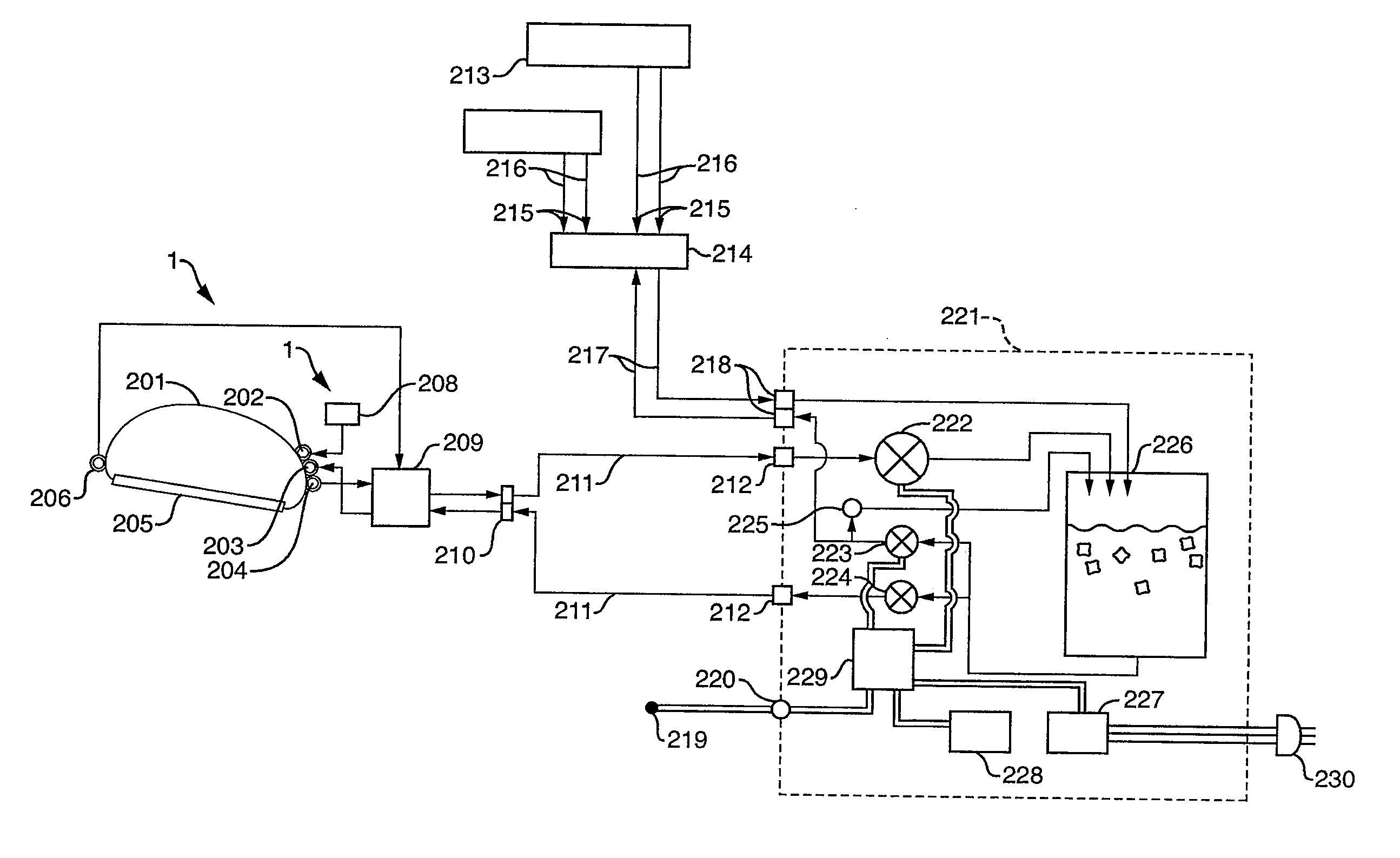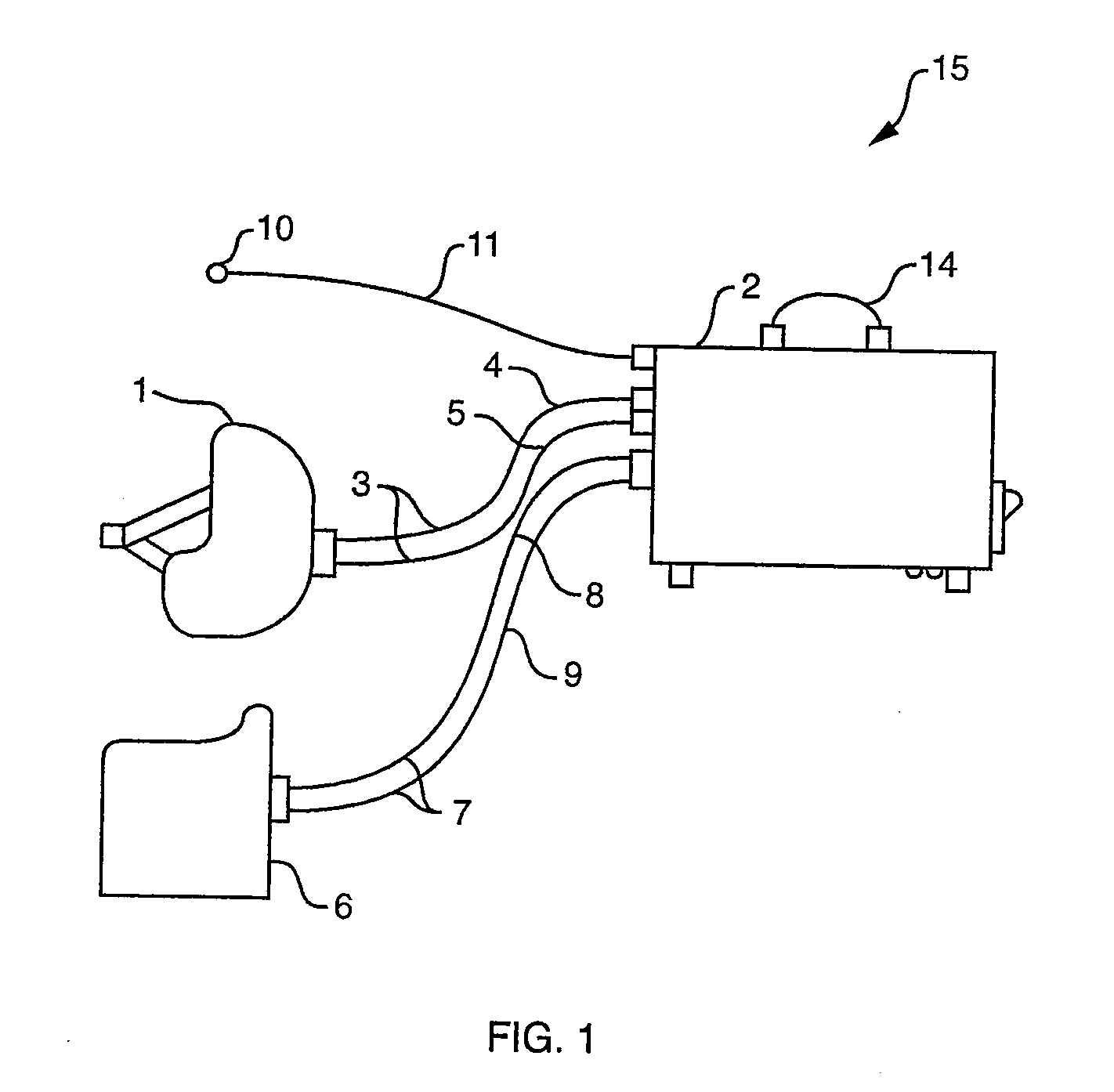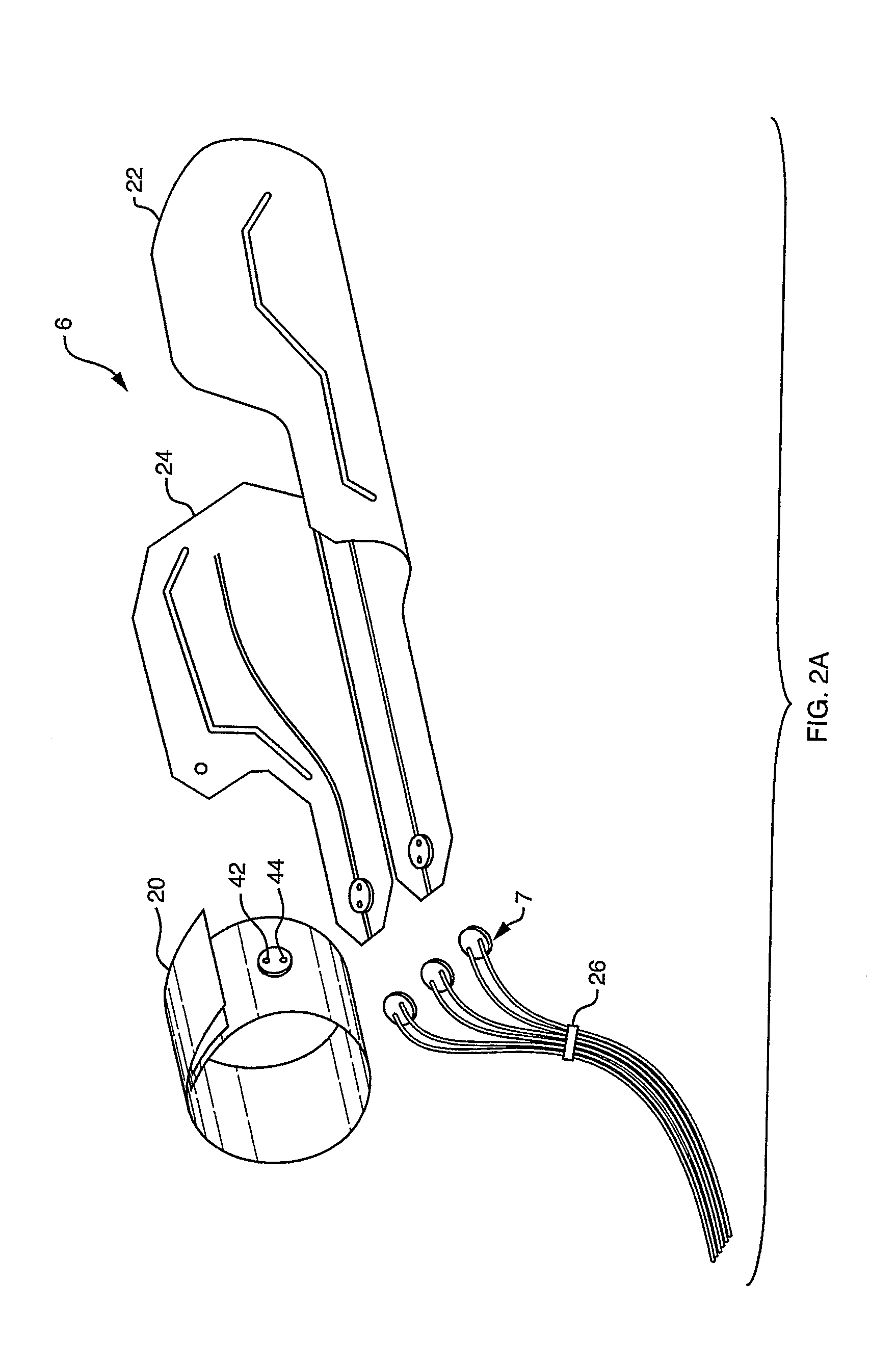Methods and Apparatus for Thermal Regulation of a Body
- Summary
- Abstract
- Description
- Claims
- Application Information
AI Technical Summary
Benefits of technology
Problems solved by technology
Method used
Image
Examples
Embodiment Construction
[0041]FIG. 1 depicts an arrangement of a thermal regulation system 15. The thermal regulation system 15 includes a head covering device 1, a console 2, a body covering device 6, and a body temperature sensor 10. The thermal regulation devices and systems described in U.S. application Ser. No. 10 / 424,391 entitled “Method and Device for Rapidly Inducing Hypothermia” and U.S. application Ser. No. 10 / 706,327 entitled “Method and Device for Rapidly Introducing and then Maintaining Hypothermia”, herein incorporated by reference.
[0042]The head covering device 1, in one arrangement, is removably connected to console 2 by umbilical 3 having, for example, a fluid inlet tube 4 and a fluid outlet tube 5. The head covering device 1 operates to adjust the body temperature, such as a localized body temperature of a patient. The body covering device 6 is removably connected to console 2 by umbilical 7 having, for example, a fluid inlet tube 8 and a fluid outlet tube 9. The body covering device 6 op...
PUM
 Login to View More
Login to View More Abstract
Description
Claims
Application Information
 Login to View More
Login to View More - R&D
- Intellectual Property
- Life Sciences
- Materials
- Tech Scout
- Unparalleled Data Quality
- Higher Quality Content
- 60% Fewer Hallucinations
Browse by: Latest US Patents, China's latest patents, Technical Efficacy Thesaurus, Application Domain, Technology Topic, Popular Technical Reports.
© 2025 PatSnap. All rights reserved.Legal|Privacy policy|Modern Slavery Act Transparency Statement|Sitemap|About US| Contact US: help@patsnap.com



